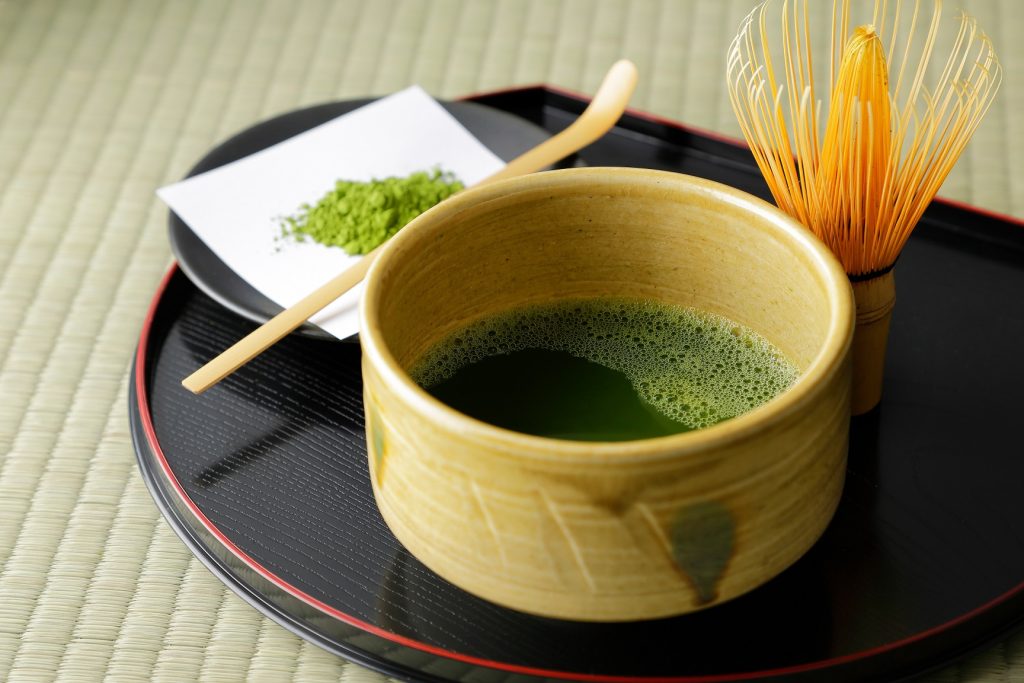Tea ceremony, or “sado” in Japanese, is a traditional ritual that involves the preparation and presentation of powdered green tea. This ceremony has been an integral part of Japanese culture for over 400 years and is still practised today in both private and public settings.

History of Tea Ceremony and How Wabi-Sabi Came To Be
The origins of tea ceremony can be traced back to the 9th century, when the Chinese monk Lu Yu wrote “The Classic of Tea,” which detailed the art of tea preparation and appreciation. In the 12th century, a Japanese monk named Eisai brought the tea plant and the knowledge of tea preparation from China to Japan, where it quickly gained popularity among the aristocracy.
However, it wasn’t until the 16th century that the tea ceremony truly became an art form. It was during this time that the tea master Sen no Rikyu developed the concept of “wabi-sabi,” which emphasises simplicity, humility, and a focus on the present moment. Rikyu believed that the tea ceremony should be an opportunity to connect with others and appreciate the beauty in everyday life.
Huge Significance in the Japanese Culture
Tea ceremony has many meanings and purposes in Japanese culture. At its core, it is a symbol of hospitality, respect, and harmony. By inviting guests into their home and serving them tea, hosts are showing their guests that they are valued and respected.
In addition to being a way to show hospitality, the tea ceremony also has spiritual significance. The act of preparing and drinking tea is seen as a form of meditation, and the simplicity and focus of the ceremony is meant to bring a sense of calm and clarity to both the host and the guest.
Tea ceremony is also closely tied to the concept of “ichigo ichie,” which translates to “one time, one meeting.” This idea emphasises the importance of being fully present in the moment and cherishing each encounter with others, as it may never happen again.
The ceremony itself is highly choreographed, with each movement and action carefully planned and executed. The host will prepare the tea in front of the guests, using a special bowl and whisk to mix the powdered tea with hot water. The guests will then drink the tea in silence, appreciating the taste and aroma of the tea as well as the beauty of the tea bowl and other utensils.
Tea ceremony is also an art form, with many variations and styles depending on the region and the school of tea. Each school has its own unique approach to the ceremony, with some emphasising simplicity and others focusing on formality and elegance.
Popularity with Foreign Tourists
Tea ceremony has become a popular attraction for foreign tourists visiting Japan. Many tea houses and cultural centres offer tea ceremony experiences for visitors, allowing them to participate in the ceremony and learn about its history and significance.
These experiences are often conducted in English or other languages, making them accessible to visitors from around the world. Tea ceremony experiences can range from simple introductions to the ceremony to more in-depth workshops and classes.
For foreign visitors, participating in a tea ceremony is a unique opportunity to experience Japanese culture and connect with locals. It is also a chance to slow down and appreciate the beauty and simplicity of the ceremony, a welcome break from the hustle and bustle of modern life.
Conclusion
Tea ceremony is a deeply meaningful and significant part of Japanese culture, reflecting the country’s emphasis on hospitality, respect, and mindfulness. By participating in the ceremony, guests are able to appreciate the beauty in simplicity and connect with others in a meaningful way. And by continuing to practise this centuries-old tradition, Japanese people are able to honour their past and preserve their cultural heritage for generations to come.










